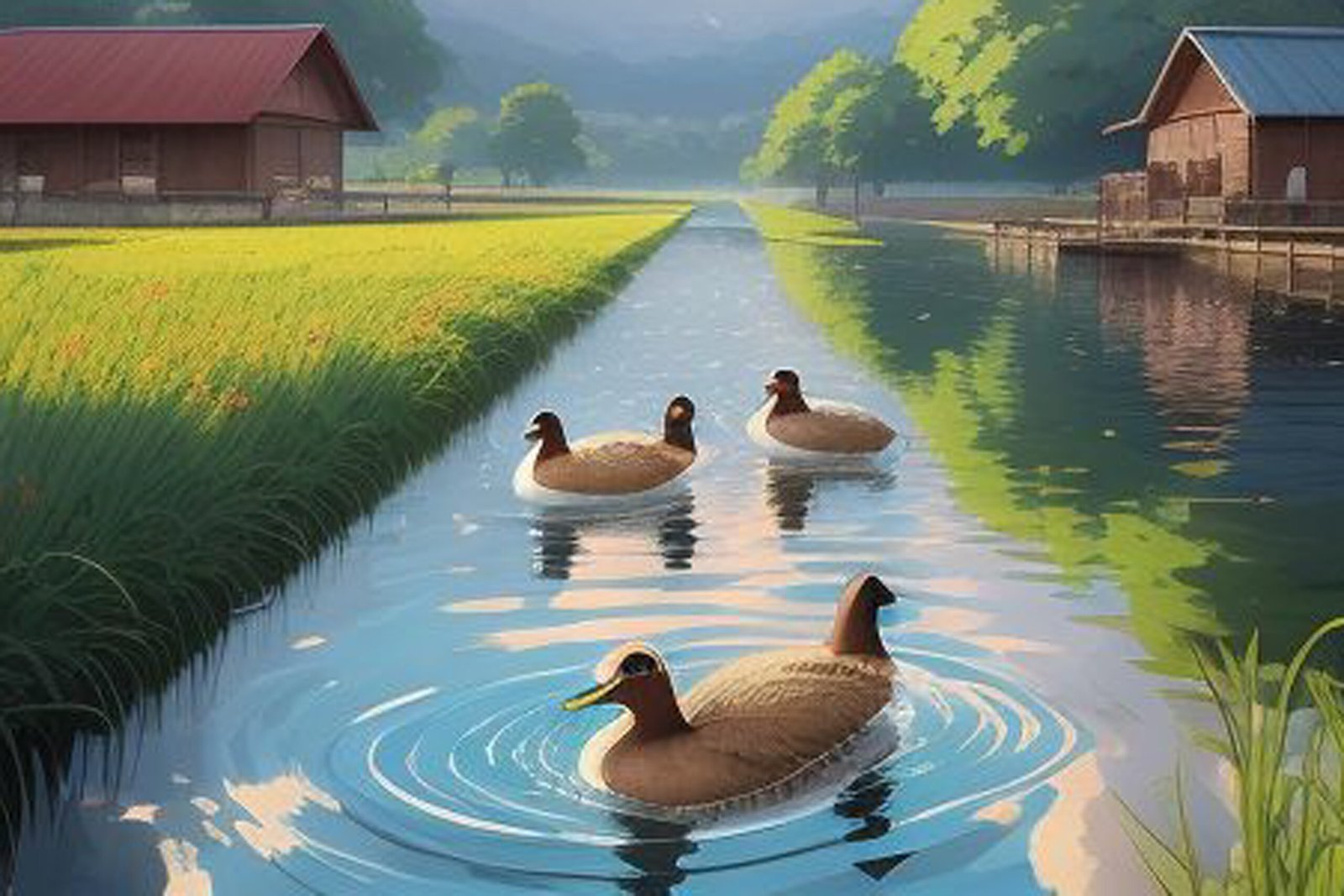
Integrated farming systems (IFS) involve combining various agricultural activities to create a more sustainable and efficient farming system. In the case of cow, duck, and fish integrated farming, these three components can be integrated to optimize resource utilization and overall productivity. Here is a basic outline of how this integrated farming system could function:
1. Cattle Farming (Cow): – Cows can be raised for milk, and dung. – The dung from cows serves as an excellent organic fertilizer. – Cattle can be utilized for plowing fields in traditional agriculture.
2. Duck Farming: – Ducks are excellent foragers and can be allowed to freely roam in the fields. – They consume insects, weeds, and leftover grains, providing natural pest control. – Duck droppings are nutrient-rich and serve as natural fertilizers for crops.
3. Fish Farming: – Fish ponds can be integrated into the system to utilize the nutrient-rich water from the duck and cow areas. – The nutrient-rich water helps promote the growth of plankton, which serves as fish food. – Fish provide an additional source of protein for the farm.
4. Integration and Synergy: – Duck & fish integrated farming system is a profitable method of raising duck & fish. In this integrated farming system there is reduction in cost of production of fish meat and egg. 300-500 ducks can be reared in one hector of fish pond.
Benefits of Cow,fish cum duck farming
1. Ducks aerate the pond by swimming which increases dissolve oxygen content pond water and aids in stocking density.
2. Duck droppings help in production of planktons and some fish eat droppings of ducks
3. Waste feed of can be utilized for feeding fish.
4. parasitic infections in duck decreases due to Swimming
5. Duck feed aquatic plants and keep pond clean which increases fish production
6-Cow dung can be utilized for plankton production & fodder,
Unused feed of cow can be utilized as fish feed
5. Fodder: – Fields surrounding the farm can be used for growing fodder for cattle. – The nutrient-rich water from fish ponds and duck and cow areas enhances soil fertility.
6. Benefits: – Diversification of income sources (milk, fish, and crops). – Reduction in the use of chemical inputs due to natural pest control. – Efficient utilization of resources, as by-products from one component can benefit another.
7. Challenges: – Proper management is crucial to balance the interactions between the different components. – Disease management is important to prevent the spread of diseases between different species. – Regular monitoring and maintenance are necessary to ensure the system’s success.